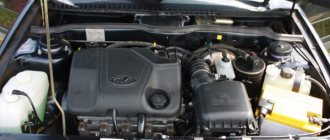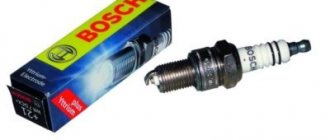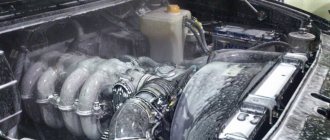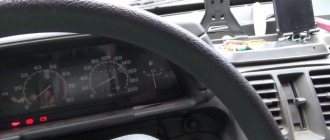Identification of an idle cylinder
The method for identifying a bad cylinder depends on the type of engine power system.
In carburetor engines, the determination of a failed cylinder is carried out experimentally. The essence of the method is to turn off each cylinder one by one by removing the tip of the high-voltage wire from the spark plug while the unit is running.
The check should begin with the 1st cylinder on a warm engine and with the speed set at 1500 rpm. If, after removing the tip, the speed drops significantly (the engine stops altogether, since as a result 2 cylinders will be switched off), the 1st cylinder is working normally.
Next, the test is carried out on the following cylinders. If the cylinder is not running, removing the tip will not affect the operation of the motor. After turning off the “drawdown” there will be no revolutions.
This test method is simple and allows you to accurately determine which cylinder is not working. But when doing it, follow safety precautions. High-voltage wires carry electrical impulses with high voltage but low current. These impulses will not cause damage to health, but the sensations are not pleasant.
As for the VAZ-2109 engine with an injector, the experimental method should not be used here (so as not to affect the operation of electronic systems). On such engines, the determination of an inoperative cylinder is carried out by scanning the ECU for errors. Interruptions in the operation of the motor are monitored by electronic systems and recorded in the form of error codes, by deciphering which we find out what caused the disruption of the normal functioning of the unit.
Video: VAZ-2109. The engine is shaking!
Reason one - spark plugs
I wrote in detail about how to determine faults in car systems using spark plugs
here .
I recommend reading it - it turned out to be useful, judging by your reviews, thank you.
We unscrew the spark plugs one at a time and look at their insulator.
If it is covered with dense carbon deposits, then it is difficult for a spark to penetrate it. The current seeks the path with the least resistance, so the spark will not be between the electrodes, but will “go” along the insulator to the side. Its energy will not be enough to set fire to the air-fuel mixture. This cylinder will not work.
We inspect the external condition of the spark plug insulator.
If there are microcracks, then part of the current will not be converted into a discharge, but will escape through these damages. You need to look at the internal insulator, which is screwed into the cylinder head, and at the external one, onto which the armor wire cap is placed.
Any chips or damage can lead to poor sparking or its complete absence.
Large or small gap between electrodes.
Many people have heard or know that for certain engines, ignition systems and types of fuel used, spark plugs with a certain gap are required. Usually its value is indicated by the manufacturer of engines and cars.
How to check the spark without special devices on the engine
This is an old, “grandfather” method, some people are afraid of it:
- They unscrewed the spark plug;
- They put an armored wire on her;
- They leaned it with the inner body, the metal part, against the engine;
- Turn on the ignition and turn the starter.
Be sure to hold on to the rubber cap of the armored wire, otherwise your hand will shake violently. This is what many are afraid of











